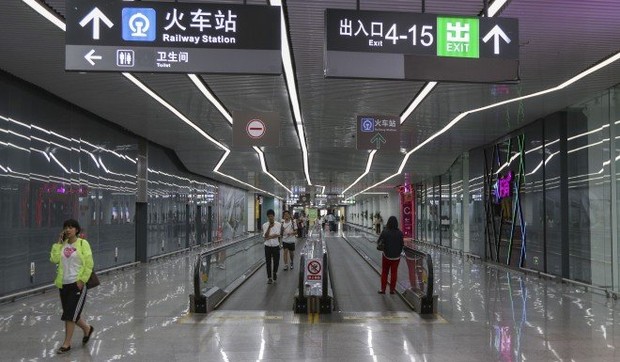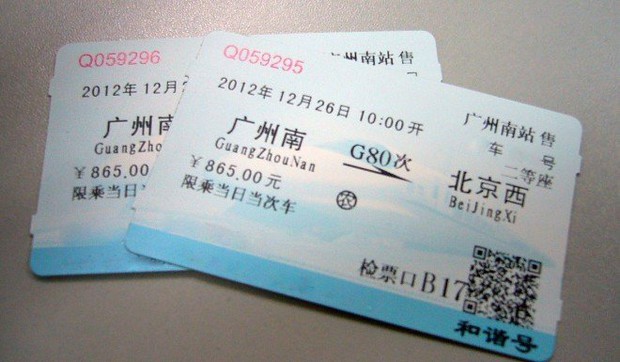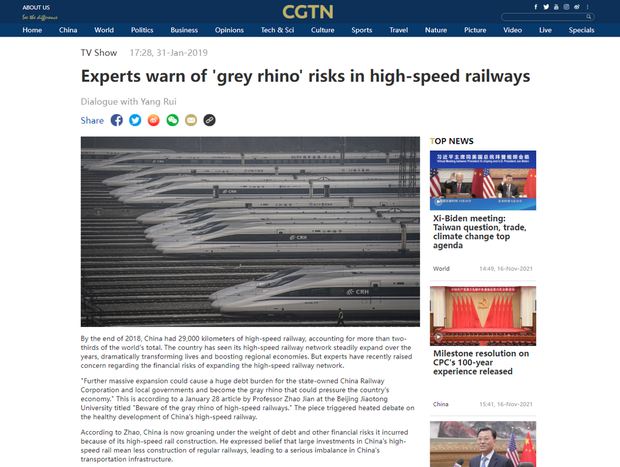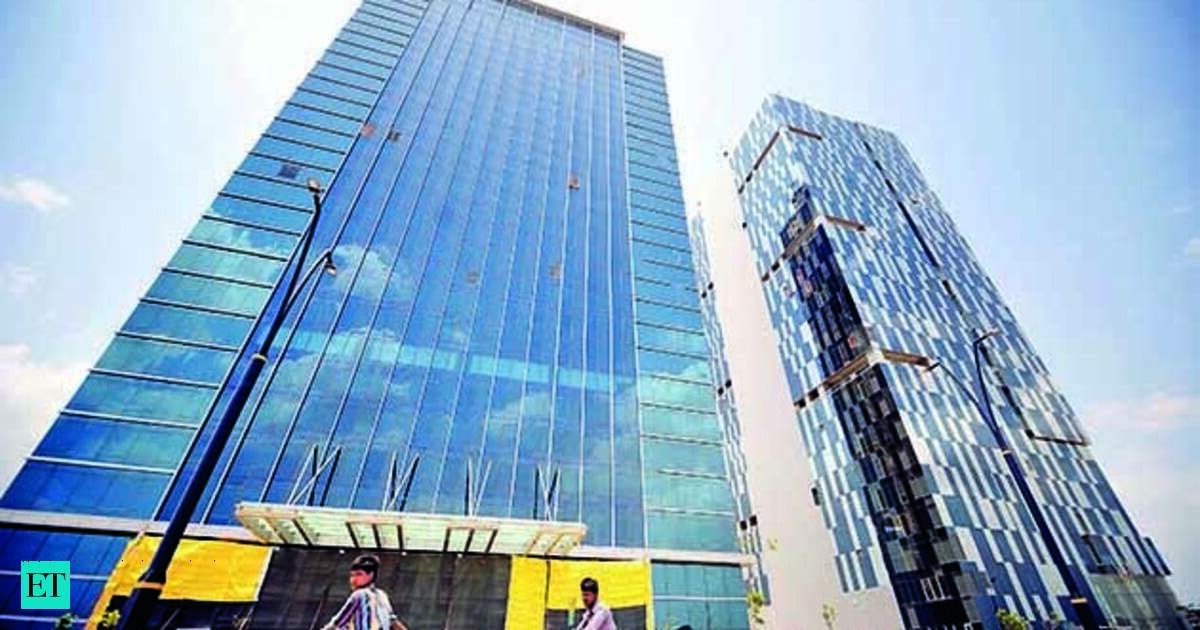The shocking truth behind China's domestic high-speed rail system: Massive loss!
11/17/2021
As of the end of 2018, China had 29,000km of high-speed rail, or two-thirds of the total length of high-speed rail in the world at that time.
A Vietnamese specialty that everyone has heard of: Look at this picture and guess it!
There is a fruit that is "sour and numb" that is still loved by many people, just looking at the scene of picking it from the tree makes my mouth water.
It can be said that China is extremely proud of its high-speed rail system and is also a country that "exports" high-speed rail abroad, but whether the country's domestic high-speed rail projects Is it all "pink"?
A 2019 article by Inkstone citing previous financial reports showed that more than 60% of China's high-speed rail operators lost at least $100 million in 2018 and continued to lose money in the second half of the year. early 2019.
Accordingly, a high-speed rail operator based in the southwestern megacity of Chengdu reported a net loss of $1.8 billion in 2018. Other rail operators are based in Singapore. The northern cities of Shenyang and Harbin reported losses of more than $1.5 billion at the same time.
China Railway Corporation owns all 18 domestic high-speed rail operators, as well as conventional rail lines and other transportation companies.
Reportedly, some other major Chinese infrastructure projects abroad, such as the railway in Kenya, also suffered losses. Many people have likened the railway project in Kenya to the "white elephant" - a term used to describe something expensive but not very useful.

China subway station (Photo: SCMP/Roy Issa)
Long term investment?
However, most analysts in China see high-speed rail as one of the much-needed infrastructure projects in the country, even if they are not immediately profitable.
"Railway projects are long-term investments," Wu Kan, chief investment officer of Soochow Securities, commented to Inkstone.
Mr. Wu said that even on lucrative railway lines like the Beijing-Shanghai line, it is "normal" to expect the initial investment to be paid back after 15 years.
The Beijing-Shanghai high-speed railway line was opened in June, 201, with an investment capital of 29 billion USD. It was not until 5 years later (2016), that this railway started to become profitable. Since then, the railway's annual profit has averaged $1.3 billion.
Analysts have suggested a number of options to increase transparency and push for needed reforms to loss-making railways, including listing shares and requiring railway operators. state-owned with financial accountability.

High-speed rail tickets from Guangzhou to Beijing are 3 times more expensive than regular trains (Image: SCMP)
In the future, Mr. Li said there will be more state-owned railway lines going into public operation. The ultimate goal is to open up railway operations to private companies and investors, of which the state remains the main shareholder.
In an article published on the website of the Cato Institute on November 8, 2021, scholar Randal O'Toole also pointed out the inadequacies of China's domestic high-speed rail project series:
"The total length of China's high-speed rail system is more than twice that of the rest of the world combined. To build those high-speed rail lines, the China Railway Corporation and the provincial governments owed trillions of dollars in debt.
Some of China's high-speed rail lines have far less revenue than electricity to operate them, and the system as a whole is losing $44 million a day.
To make up for the loss, China Railway Corporation has increased freight rates 11 times, so far the cost of rail freight is twice as much as trucking (this cost is in the US). only 1/4).
Because of that high cost, the share of freight transport by rail has fallen from 50% in 2005 - when China started building high-speed rail, to 17% in 2016, and probably today. even less."
"Gray Rhino"?
In 2019, China's CGTN news agency published an article citing expert concerns about financial risks as the country expands its domestic high-speed rail network.

In particular, Professor Zhao Jian from Beijing Jiaotong University warned that this could be a "gray rhino": "Further expansion of the high-speed rail network may cause heavy heavily indebted to the state-owned China Railway Corporation and local governments, and becoming a gray rhino could put pressure on the country's economy."
According to Mr. Zhao, China is currently bearing the burden of debt and other financial risks caused by the construction of high-speed railways. He argued that China's large investments in high-speed rail mean a reduction in investment in the construction of conventional railway lines, leading to a serious imbalance in China's transport infrastructure. Country.
Meanwhile, another expert named Wang Huiyao believes that high-speed rail has made a great contribution to China's economic and social development, and the country can solve its debt problems. in the long term.
The expert also pointed to many areas that could indirectly benefit from the tracks, such as the real estate market and industrial park construction, as the high-speed rail network improves travel efficiency. and living standards of people in rural areas.
Even so, Mr. Wang said that the construction of high-speed railway should have better planning based on demand to avoid potential risks.

 kenh14.vn
kenh14.vn
11/17/2021
As of the end of 2018, China had 29,000km of high-speed rail, or two-thirds of the total length of high-speed rail in the world at that time.
A Vietnamese specialty that everyone has heard of: Look at this picture and guess it!
There is a fruit that is "sour and numb" that is still loved by many people, just looking at the scene of picking it from the tree makes my mouth water.
It can be said that China is extremely proud of its high-speed rail system and is also a country that "exports" high-speed rail abroad, but whether the country's domestic high-speed rail projects Is it all "pink"?
A 2019 article by Inkstone citing previous financial reports showed that more than 60% of China's high-speed rail operators lost at least $100 million in 2018 and continued to lose money in the second half of the year. early 2019.
Accordingly, a high-speed rail operator based in the southwestern megacity of Chengdu reported a net loss of $1.8 billion in 2018. Other rail operators are based in Singapore. The northern cities of Shenyang and Harbin reported losses of more than $1.5 billion at the same time.
China Railway Corporation owns all 18 domestic high-speed rail operators, as well as conventional rail lines and other transportation companies.
Reportedly, some other major Chinese infrastructure projects abroad, such as the railway in Kenya, also suffered losses. Many people have likened the railway project in Kenya to the "white elephant" - a term used to describe something expensive but not very useful.

China subway station (Photo: SCMP/Roy Issa)
Long term investment?
However, most analysts in China see high-speed rail as one of the much-needed infrastructure projects in the country, even if they are not immediately profitable.
"Railway projects are long-term investments," Wu Kan, chief investment officer of Soochow Securities, commented to Inkstone.
Mr. Wu said that even on lucrative railway lines like the Beijing-Shanghai line, it is "normal" to expect the initial investment to be paid back after 15 years.
The Beijing-Shanghai high-speed railway line was opened in June, 201, with an investment capital of 29 billion USD. It was not until 5 years later (2016), that this railway started to become profitable. Since then, the railway's annual profit has averaged $1.3 billion.
Analysts have suggested a number of options to increase transparency and push for needed reforms to loss-making railways, including listing shares and requiring railway operators. state-owned with financial accountability.

High-speed rail tickets from Guangzhou to Beijing are 3 times more expensive than regular trains (Image: SCMP)
In the future, Mr. Li said there will be more state-owned railway lines going into public operation. The ultimate goal is to open up railway operations to private companies and investors, of which the state remains the main shareholder.
In an article published on the website of the Cato Institute on November 8, 2021, scholar Randal O'Toole also pointed out the inadequacies of China's domestic high-speed rail project series:
"The total length of China's high-speed rail system is more than twice that of the rest of the world combined. To build those high-speed rail lines, the China Railway Corporation and the provincial governments owed trillions of dollars in debt.
Some of China's high-speed rail lines have far less revenue than electricity to operate them, and the system as a whole is losing $44 million a day.
To make up for the loss, China Railway Corporation has increased freight rates 11 times, so far the cost of rail freight is twice as much as trucking (this cost is in the US). only 1/4).
Because of that high cost, the share of freight transport by rail has fallen from 50% in 2005 - when China started building high-speed rail, to 17% in 2016, and probably today. even less."
"Gray Rhino"?
In 2019, China's CGTN news agency published an article citing expert concerns about financial risks as the country expands its domestic high-speed rail network.

In particular, Professor Zhao Jian from Beijing Jiaotong University warned that this could be a "gray rhino": "Further expansion of the high-speed rail network may cause heavy heavily indebted to the state-owned China Railway Corporation and local governments, and becoming a gray rhino could put pressure on the country's economy."
According to Mr. Zhao, China is currently bearing the burden of debt and other financial risks caused by the construction of high-speed railways. He argued that China's large investments in high-speed rail mean a reduction in investment in the construction of conventional railway lines, leading to a serious imbalance in China's transport infrastructure. Country.
Meanwhile, another expert named Wang Huiyao believes that high-speed rail has made a great contribution to China's economic and social development, and the country can solve its debt problems. in the long term.
The expert also pointed to many areas that could indirectly benefit from the tracks, such as the real estate market and industrial park construction, as the high-speed rail network improves travel efficiency. and living standards of people in rural areas.
Even so, Mr. Wang said that the construction of high-speed railway should have better planning based on demand to avoid potential risks.

Sự thật sốc phía sau hệ thống đường sắt cao tốc nội địa đỉnh cao của Trung Quốc: Lỗ nặng!
Tính đến cuối năm 2018, Trung Quốc có 29.000km đường sắt cao tốc, tương đương 2/3 tổng chiều dài đường sắt cao tốc trên toàn thế giới vào thời điểm đó.








